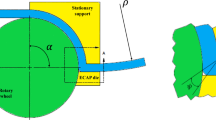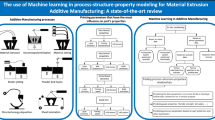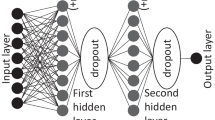Abstract
Fluid dispensing is a popular process in semiconductor manufacturing industry which is commonly used in die-bonding as well as microchip encapsulation for electronic packaging. Modelling the fluid dispensing process is important to understand the process behaviour as well as determine optimum operating conditions of the process for a high-yield, low cost and robust operation. Previous studies of fluid dispensing mainly focus on the development of analytical models. However, an analytical model for fluid dispensing, which can provide accurate results, is very difficult to develop because of the complex behaviour of fluid dispensing and high degree of uncertainties of the process in a real world environment. In this project, an empirical approach to modelling fluid dispensing was attempted. Two common empirical modelling techniques, statistical regression and neural networks, were introduced to model fluid dispensing process for electronic packaging. Development of neural network based process models using genetic algorithm (GA) and Levenberg−Marquardt algorithm are presented. Validation tests were performed to evaluate the effectiveness of the developed process models from which a multiple regression model and a GA trained neural network with the architecture of 3-15-1 were identified to be the process models of the fluid dispensing respectively for the encapsulation weight and encapsulation thickness.
Similar content being viewed by others
References
Chen DX (2002) Modelling and off-line control of fluid dispensing for electronics packaging. Dissertation. The University of Saskatchewan, Canada
Li HX, Tso SK, Deng H (2001) A concept approach to integrate design and control for the epoxy dispensing process. Int J Adv Manuf Technol 17:677−682
Li J, Deng G (2004) Technology development and basic theory study of fluid dispensing – a review. Proc 6th IEEE CPMT Conference, pp 198−205
Hong YP, Li HX (2003) Comparative study of fluid dispensing modeling. IEEE Trans Electron Packag Manuf 26(4):273−280
Seber GAF (2003) Linear regression analysis. Wiley, New York
Petri KL, Billo RE, Bidanda B (1998) A neural network process model for abrasive flow machining operations. J Manuf Syst 17(1):52−65
Brinksmeier E, Tonshoff HK, Czenkusch C, Heinzel C (1998) Modelling and optimisation of grinding processes. J Intell Manuf 9:303−314
Prasad KDV, Yarlagadda (2000) Prediction of die casting process parameters by using an artificial neural network model for zinc alloys. Int J Prod Res 38(1):119−139
Kam KK (1998) Supervisory system for epoxy dispensing process monitoring in die bonding. Dissertation. The Hong Kong Polytechnic University
Ip KW, Kwong CK, Bai H, Tsim YC (2003) Process modeling of epoxy dispensing for microchip encapsulation using fuzzy linear regression with fuzzy intervals. Int J Adv Manuf Technol 22:417−423
Gilleo K (2004) Area array packaging processes. McGraw-Hill, New York
Hagan MT, Menhaj M (1994) Training feedforward networks with the Marquardt algorithm. IEEE Trans Neural Netw 5(6):989−993
Lera G, Pinzolas M (2002) Neighborhood based Levenberg-Marquardt algorithm for neural network training. IEEE Trans Neural Netw 13(5):1200−1203
Leung FHF, Lam HK, Ling SH, Tam PKS (2003) Tuning of the structure and parameters of a neural network using an improved genetic algorithm. IEEE Trans Neural Netw 14(1):79−88
Back T, Hammel U, Schwefel HP (1997) Evolutionary computation: comments on the history and current state. IEEE Trans Evolut Comput 1(1):3−17
Man KF, Tang KS,Kwong S (1996) Genetic algorithms: concepts and applications. IEEE Trans Ind Electron 43(5)
Michalewicz Z (1992) Genetic algorithms + Data structures=Evolution programs. Springer, Berlin Heidelberg New York
Srinivas M, Patnaik LM (1994) Genetic algorithms: a survey. IEEE Comput 27(6):17−26
Goldberg DE (1989) Genetic algorithms in search, optimisation and machine learning. Addison-Wesley Longman, Boston
Whitley D (1989) The GENITOR algorithm and selection pressure: why rank-based allocation of reproductive trials is best. Proc Third Int Conf Genet Algorithms 116−121
Goldberg DE, Deb K (1991) A comparative analysis of selection schemes used in genetic algorithms. Found Genet Algorithms 3:69−93
Muhlenbein H, Voosen DS (1993) Predictive models for the breeder genetic algorithm: I. Continuous parameter optimization. Evolution Comput 1(1):25−49
Eshelmann LJ (1991) The CHC adaptive algorithm: how to have safe search when engaging in nontraditional genetic recombination. Found Genet Algorithms 1:265−283
Schaffer J, Caruana R, Eshelman L, Das R (1989) A study of control parameters affecting online performance of genetic algorithms for function optimization. Proc 3rd Int Conf Genet Algorithms 51−60
Acknowledgements
The work described in this paper was supported substantially by a grant from the Hong Kong Polytechnic University (Project No. G-YE05).
Author information
Authors and Affiliations
Corresponding author
Rights and permissions
About this article
Cite this article
Kwong, C.K., Chan, K.Y. & Wong, H. An empirical approach to modelling fluid dispensing for electronic packaging. Int J Adv Manuf Technol 34, 111–121 (2007). https://doi.org/10.1007/s00170-006-0552-0
Received:
Accepted:
Published:
Issue Date:
DOI: https://doi.org/10.1007/s00170-006-0552-0




